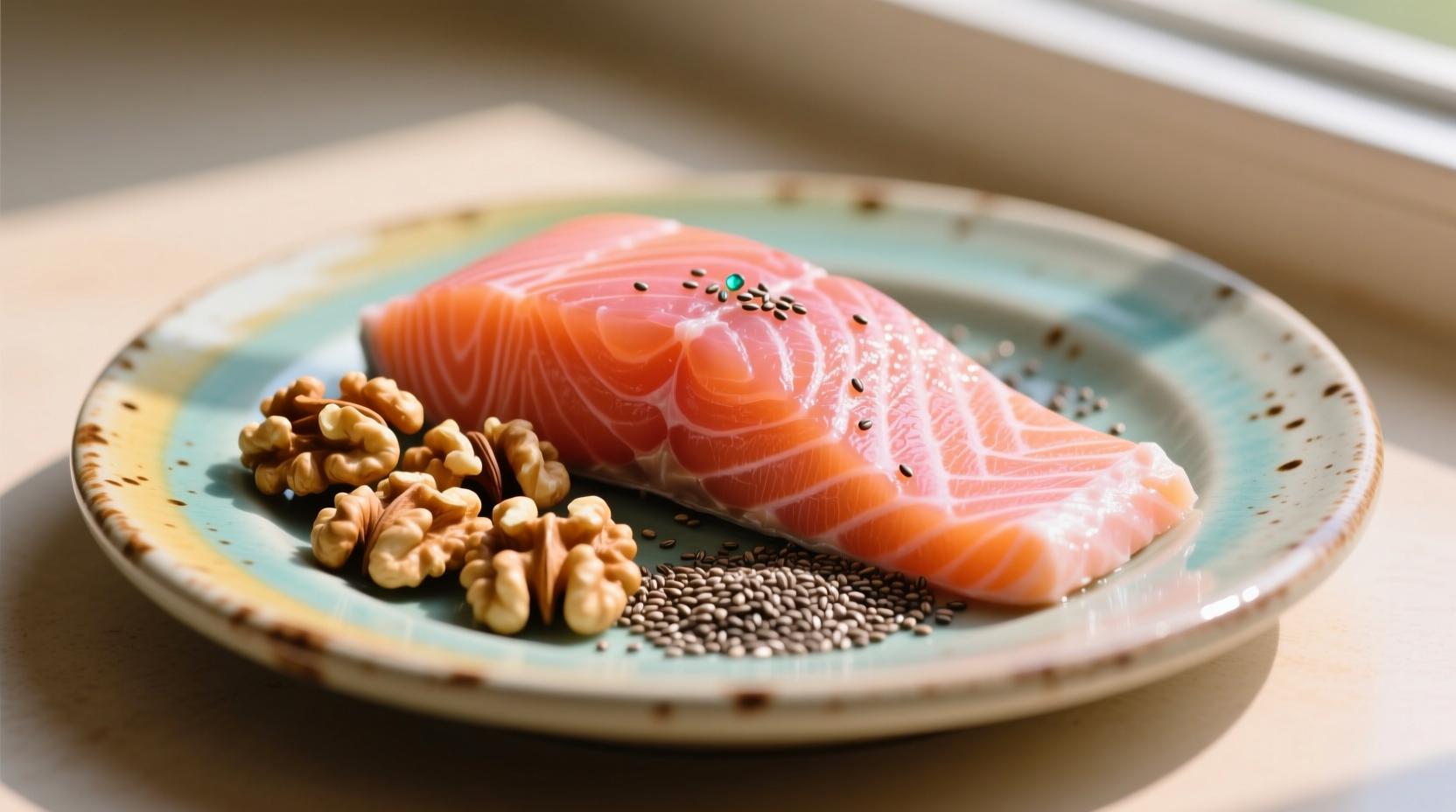Discover exactly which foods deliver the most omega-3 fatty acids per serving and how to incorporate them into your daily diet. Whether you're seeking heart-healthy options, vegetarian alternatives, or maximum brain-boosting nutrition, this evidence-based guide provides actionable information verified by nutritional science authorities.
Understanding Omega-3 Types and Their Importance
Not all omega-3s are created equal. The three primary types serve different functions in your body:
- EPA (eicosapentaenoic acid) - Primarily supports heart health and reduces inflammation
- DHA (docosahexaenoic acid) - Critical for brain development and cognitive function
- ALA (alpha-linolenic acid) - Plant-based precursor that converts to EPA/DHA (though inefficiently)
According to the National Institutes of Health, adults should consume at least 250-500 mg combined EPA and DHA daily, plus 1.1-1.6 grams of ALA depending on gender. Fatty fish provide the most bioavailable EPA and DHA, while plant sources offer ALA that requires conversion.
Top 10 Omega-3 Rich Foods Ranked by Nutritional Value
| Food Source | Omega-3 Content (per standard serving) | Type of Omega-3 | Additional Health Benefits |
|---|---|---|---|
| Mackerel (Atlantic, cooked) | 5,134 mg per 3 oz | EPA/DHA | High in vitamin D, selenium, and B vitamins |
| Salmon (wild-caught, cooked) | 4,123 mg per 3 oz | EPA/DHA | Rich in potassium and astaxanthin antioxidants |
| Chia Seeds (dried) | 5,060 mg per ounce | ALA | Excellent fiber source (11g per ounce) |
| Herring (Atlantic, pickled) | 3,184 mg per 3 oz | EPA/DHA | High in vitamin B12 and calcium |
| Walnuts (English) | 2,570 mg per ounce | ALA | Packed with polyphenol antioxidants |
| Sardines (canned in oil) | 2,205 mg per 3 oz | EPA/DHA | Complete protein source with calcium from bones |
| Flaxseeds (ground) | 2,350 mg per tablespoon | ALA | Rich in lignans with potential cancer-fighting properties |
| Omega-3 Enriched Eggs | 340 mg per egg | EPA/DHA | Complete protein with choline for brain health |
| Algal Oil Supplements | 200-300 mg per capsule | DHA | Vegan source with no fishy aftertaste |
| Kidney Beans (cooked) | 10-15 mg per cup | ALA | High fiber content supports digestive health |
This nutritional comparison reveals important context boundaries: while plant sources like chia and flaxseeds contain high ALA levels, your body converts only 5-10% of ALA to EPA and less than 0.5% to DHA. For individuals seeking maximum cardiovascular and cognitive benefits, fatty fish provide the most efficient delivery of bioactive EPA and DHA forms.
Plant-Based Omega-3 Powerhouses
For vegetarians and vegans, these omega-3 rich foods deliver significant ALA content with additional nutritional benefits:
- Chia seeds - One ounce provides 5,060 mg of ALA plus 11 grams of fiber. When soaked, they form a gel that aids nutrient absorption.
- Flaxseeds (ground) - Must be ground for proper absorption. One tablespoon delivers 2,350 mg ALA plus lignans with antioxidant properties.
- Hemp seeds - Offer 1,000 mg ALA per 3 tablespoons along with complete plant protein.
- Walnuts - The highest omega-3 nut with 2,570 mg per ounce plus polyphenol antioxidants.
Research from the American Heart Association indicates that while plant-based sources provide cardiovascular benefits, they don't deliver the same magnitude of heart protection as marine sources due to the inefficient conversion process. For optimal results, vegetarians should consume these foods daily and consider algal oil supplements for direct DHA intake.

Practical Incorporation Strategies
Maximize your omega-3 intake with these chef-tested techniques:
- Preserve nutrient integrity - Bake or poach fish at temperatures below 350°F to prevent omega-3 degradation
- Boost absorption - Pair plant-based sources with healthy fats (like olive oil) to increase ALA bioavailability by 20-30%
- Daily integration - Add 1 tablespoon ground flaxseed to morning smoothies or sprinkle chia seeds on yogurt
- Strategic meal planning - Consume fatty fish twice weekly to meet recommended EPA/DHA targets
Professional chefs recommend storing ground flaxseeds and chia seeds in the refrigerator to prevent oxidation. For fish preparation, marinating in citrus juice before cooking can reduce any potential fishy odors while preserving omega-3 content.
Common Omega-3 Misconceptions Debunked
Several widespread beliefs about omega-3 foods require clarification based on current nutritional science:
- "All fish provide equal omega-3 content" - Fatty fish contain 10-20 times more omega-3 than lean varieties like cod or tilapia
- "Plant sources equal fish sources" - Due to limited conversion rates, you'd need to consume 10-20 times more ALA to match EPA/DHA benefits
- "Omega-3 enriched foods are equally effective" - Many fortified products contain minimal amounts that don't significantly impact daily requirements
- "More is always better" - Excessive intake (over 5,000 mg daily) may cause blood thinning and interact with medications
The FDA recommends limiting fatty fish consumption to 12 ounces weekly due to potential mercury content, particularly for pregnant women and children. Smaller fish like sardines and anchovies typically contain lower mercury levels while providing excellent omega-3 content.
Optimizing Your Omega-3 Intake Strategy
For maximum health benefits, follow this evidence-based approach:
- Consume 2-3 servings of fatty fish weekly (salmon, mackerel, herring)
- Include 1-2 tablespoons of ground flaxseed or chia seeds daily
- Snack on a small handful of walnuts (about 14 halves) each day
- Consider algal oil supplements if following a strict plant-based diet
- Avoid excessive heat when cooking omega-3 rich foods to preserve nutrient integrity
Nutrition timeline data shows that omega-3 recommendations have evolved significantly. While early research focused primarily on heart health, current studies from the National Center for Biotechnology Information demonstrate benefits for cognitive function, eye health, and inflammatory conditions. The optimal ratio of omega-6 to omega-3 fatty acids has shifted from 15:1 in modern diets to the recommended 4:1 ratio for balanced inflammation response.











 浙公网安备
33010002000092号
浙公网安备
33010002000092号 浙B2-20120091-4
浙B2-20120091-4